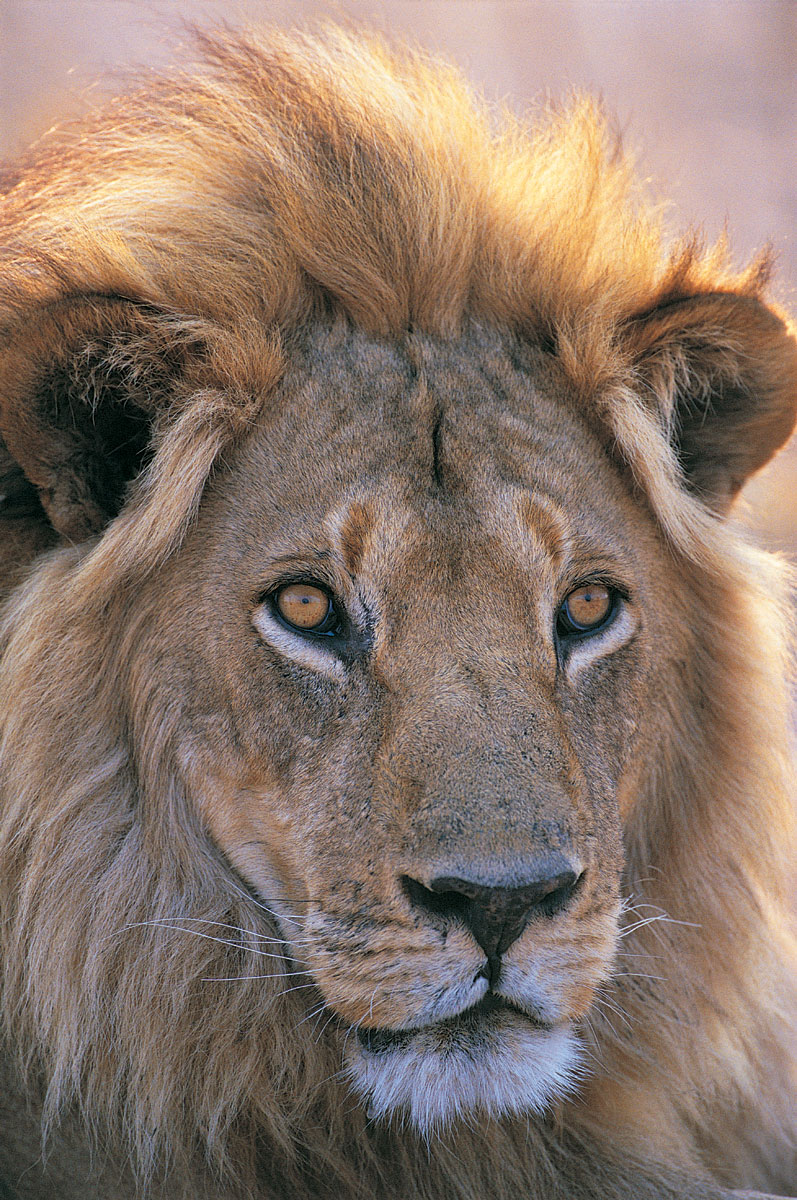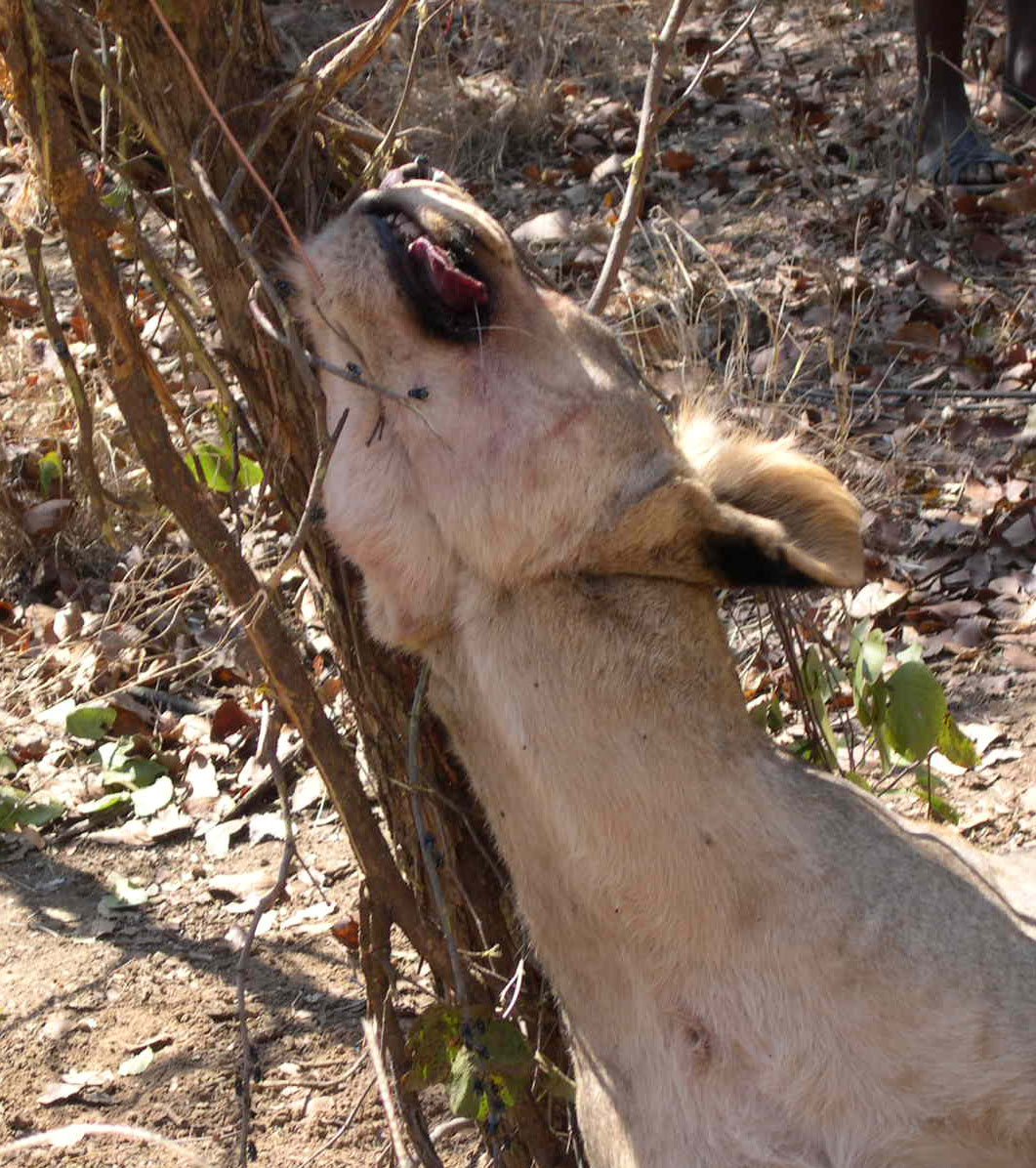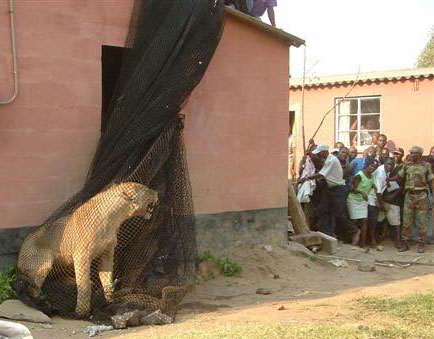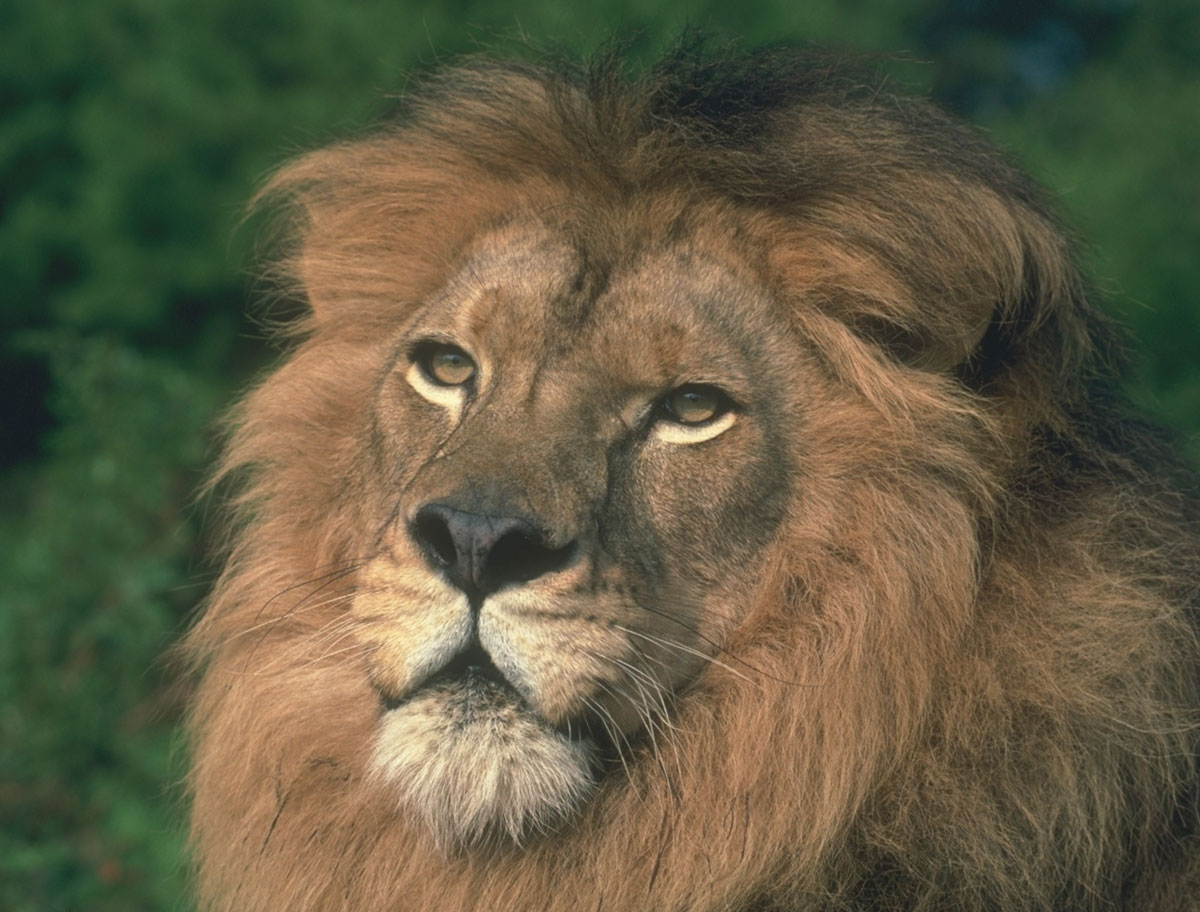Hunters Can Save Lions and Lion Hunting
 The African lion. King of beasts, symbol of Safari Club International. Humans have instinctive admiration of and respect for this majestic creature. When encountered on a hunt, it is a duel of predator vs. predator. It has been that way since the beginning. Without our help, it may soon end.
The African lion. King of beasts, symbol of Safari Club International. Humans have instinctive admiration of and respect for this majestic creature. When encountered on a hunt, it is a duel of predator vs. predator. It has been that way since the beginning. Without our help, it may soon end.
The opportunity to hunt a lion is slowly reaching a turning point in history. If lion numbers are not stabilized or increased, they will succumb to the many threats challenging their very existence. This is one of those seminal moments in history for both lion hunting and the lions themselves.
Factors most threatening lions throughout their range are human-lion conflict, low prey availability, human encroachment and land-use change. Those threats were identified about five years ago during two regional lion workshops, one held in South Africa and the other in Cameroon. Hunters, via SCI Foundation, underwrote both workshops and supported the production of two resulting lion management plans.
The individual threats relate to each other. Human populations are growing in African countries, sprawling out from urban centers. More crops and livestock are necessary to sustain an ever-burgeoning human population. Lion habitat is being converted to cow pastures and corn fields, displacing both lions and their prey. Humans poison, snare and shoot lions that feast on their cattle and search their communities for food.  Lions are seen as a menace, a threat to human livelihoods and safety. Overall, humans are competing with the lion and, because of our numbers, humans are winning.
Since 1990, lions have killed more than 600 people and injured another 300 in Tanzania alone!
Some threats to lion conservation are far less obvious. Some are even counter-intuitive. The U.S. Endangered Species Act (ESA), for instance, can be an unintentional threat. In 1973, the United States adopted a law that intends to protect and recover threatened and endangered species and the ecosystems upon which they depend. If an animal is listed on the ESA as endangered, the Act protects it by prohibiting unauthorized taking, possession, sale and transport of the animal in the United States.  This means that if lions are ever listed as endangered, the U.S. Fish and Wildlife Service (“FWS”) will ban importation of lion hunting trophies into the United States.
In reality the ESA, as implemented, can be more harmful than helpful.  In some areas of Africa, the only reason why humans tolerate lions invading their communities and taking their livestock is because of trophy hunting. Hunting brings huge revenues to communities and governments, creates jobs for local people, and creates a value for the lion that may not exist otherwise. Hunting revenues are often used by governments to fund wildlife conservation efforts, including lions.  Since a large portion of that revenue is generated by hunters coming from the United States, listing the lion as endangered well could prove to be counter-productive to conservation and detrimental to lion populations.
In real world Africa, what pays stays, and lion hunters pay. Sure, U.S. dollars could still be earned through photo-tourism operations in the absence of hunting, but extremely high numbers of tourists are needed to match the same revenue raised through the hunting of one lion. One hunter will pay tens of thousands of dollars, whereas one photographer will pay tens of dollars. The more tourists who are shuttled in and out of Africa’s national parks, the more impact and degradation to the environment occurs, which is a factor commonly overlooked.
African landowners who rely on lions, many affiliated with hunting, protect the resident prides. They hire anti-poaching guards who establish a strong presence and prevent lions from being taken as bushmeat. They remove indiscriminate snare wires from the bush and report poachers to authorities. While there is always room for improvement in the hunting industry, overall, the industry does protect and conserve lions in a sustainable way.
 Currently, thousands of species are listed on the ESA as threatened or endangered – 2,050 and increasing. Of this enormous list, 618 are foreign species living outside of the United States. Shockingly, in the history of the ESA, only 28 species have recovered and been removed from the list. This means that about one percent of species that are listed on the ESA have recovered. That is disheartening, considering 40 years of effort. The ESA is clearly failing to meet one of its primary purposes, which is to recover species.
Currently, thousands of species are listed on the ESA as threatened or endangered – 2,050 and increasing. Of this enormous list, 618 are foreign species living outside of the United States. Shockingly, in the history of the ESA, only 28 species have recovered and been removed from the list. This means that about one percent of species that are listed on the ESA have recovered. That is disheartening, considering 40 years of effort. The ESA is clearly failing to meet one of its primary purposes, which is to recover species.
The threat of lions joining the thousands of ESA-listed species is very real.  In 2011, Humane Society of the United States, Humane Society International, Defenders of Wildlife, International Fund for Animal Welfare, and Born Free filed a petition with the United States government to list the African lion as endangered pursuant to the ESA.  This is just one strategy animal rights groups take to put an end to hunting and use of wildlife.  Get the animal listed, and trade is essentially banned.  An ESA listing decision from the U.S. government is pending, and if lions are listed, they will likely stay listed for a long time.
Lions face a similar problem with a possible uplisting at the Convention on International Trade in Endangered Species (CITES).  Like the ESA, but more internationally focused, CITES poses a threat to lion conservation. CITES is a treaty organization that sets international wildlife trade policy, and trade includes any international movement of plants and wildlife, not just commercial activities.  It has its own mechanism to list threatened and endangered wildlife into three categories: Appendix I, II or III.  Appendix I species receive the maximum regulation on trade; Appendix III the least.
African lions are listed as an Appendix II species, which allows the international shipment of hunting trophies under a close eye and with special permits.  Obtaining these permits is routine, and importation generally occurs without problems.  Listing lions as an Appendix I species would create additional paperwork and restrictions on shipping hunting trophies. Some countries may even prohibit imports because of their own national laws. While CITES intends to protect species by regulating trade, an Appendix I listing for lion likely would diminish revenues generated from international hunting, at least to some extent. CITES affects hunters worldwide, unlike the ESA, which only affects hunting and transport in the U.S.
SCI Foundation anticipated that lions would be proposed for a CITES Appendix I listing in 2013. To ensure that such a decision would be based on the best available information and science-based knowledge, SCI Foundation proactively supported a comprehensive review of the lion by CITES in 2011. The review, referred to as the Periodic Review, is now investigating the biology and management of lions across their range.  The review will conclude with recommendations on whether the lion is appropriately listed on CITES Appendix II. The world waits to learn of the conclusions, expected in 2013, of this scientific study of lions.
What about actual, on-the-ground conservation? What about helping lions and putting real dollars into conservation that makes a difference? SCI Foundation and African governments have partnered and continue to develop long-term conservation goals. Previously, the focus has been on counting numbers of lions in order to justify stability in populations and what protection listing status is most appropriate.  Less emphasis has been placed on managing the populations and mitigating the top threats to lion sustainability. Central to effective lion conservation is a shift from just taking censuses and setting objectives to addressing key threats.
One of the first objectives is to provide more food for lions. Eliminating food as a limiting factor will erase one threat. Increasing lion prey, such as impala, zebra, sable, bushbuck, springbok and others, where necessary, should strongly influence the movements and numbers of lions that the land can sustain. How do we do that? We promote the growth of forage, which mainly includes digestible grasses and browse, in targeted areas that lions would use. Prescribed burning and seed plantings are other approaches to enhancing the range. As rainfall is a critical factor in range enhancement in Africa, managers must closely consider planting times and avoid droughts.
Addressing other threats, such as human-wildlife conflict and habitat fragmentation, requires the cooperation of the people. African governments must invest in proper land-use planning and the people need to control how they use their own lands.  Proper zoning of lands will help separate lions from humans and livestock, which will greatly reduce the number of lions that become problem animals.  If lions kill less livestock, humans will poison or snare fewer lions.
 “This is particularly important in places like Mozambique, Zambia and Tanzania, where people live within wildlife areas. In those areas, if some kind of zoning or land use planning approach is pursued, this can ensure the retention of wilderness blocks, make control of poaching easier, and reduce the human-wildlife interface, thus reducing conflict,” says Dr. Peter Lindsey from the Mammal Research Institute of the University of Pretoria.
“This is particularly important in places like Mozambique, Zambia and Tanzania, where people live within wildlife areas. In those areas, if some kind of zoning or land use planning approach is pursued, this can ensure the retention of wilderness blocks, make control of poaching easier, and reduce the human-wildlife interface, thus reducing conflict,” says Dr. Peter Lindsey from the Mammal Research Institute of the University of Pretoria.
One major challenge is the location of human settlements. At times, the best approach is to move a village.  But how do you tell an established community that they must leave?  “Namibia has relocated several cattle posts and some villages in Caprivi to create wildlife corridors this year, which is handled by the local community through their Conservancy Committee, and not the central government. We have also removed fences between Namibia and Botswana that have increased game movement,” reports Dr. Ortwin Aschenborn, a veterinarian working with the Namibian government. These efforts appear to be working very well, so moving communities is certainly possible, and several lion range states are facing this very issue.
Importantly, neighboring countries need to coordinate landscape level planning to ensure the maximum contiguous space is provided for lions and other wildlife. African governments, communities and private organizations recognize this importance and are developing dozens of Transfrontier Conservation Areas, or TFCAs, across southern Africa.  These multilateral agreements are being adopted over time and have the potential to secure extensive protected areas for wildlife.
Improvements to other current management regimes also can help.  While human-lion conflict is directly associated with how close humans live to lions, solutions short of moving people out of lion territories exist. Examples include fortifications of livestock paddocks and improving the success of problem animal control.  Another example, a contentious issue in the hunting industry, is the testing out of minimum-age harvest regulations.
Tanzania is the first government to limit lion hunting to adult males that are six years and older. The intention is to ensure a male lion has matured and bred before facing hunting pressure, which should increase the number of lions in each age class up to six years of age. Some studies also suggest that this age cutoff would minimize infanticide from stray males expressing dominance in a new pride. Additional governments may try this same system, and in a few years, we will have an understanding as to whether this approach is working.
SCI Foundation and Safari Club International work together to set a milestone in lion conservation by providing resources to enhance lion ranges and prey populations, achieve land planning goals and improve on best practices in lion management. It’s a tall order. The scale of resources needed to address the main threats to lions is enormous, and so is the immediate need to fundraise and invest in long-term conservation initiatives. Fundraising began with a roar Jan. 26 at the 2013 SCI Hunters’ Convention, where a special fundraising event was held at the Saturday night banquet dinner. SCI Foundation and Safari Club International called on hunters to donate to long-term conservation plans for lions.  More than $1 million was raised.
For decades, hunters have demonstrated they are true conservationists and have provided mountains of funding for real conservation work. We hunters must continue to take responsibility for stewardship of the wildlife we hunt and the wild lands on which we hunt.– Matt Eckert
Click here to contribute to the African Lion Defense Fund
READ MORE:
New York Times—Saving Lions By Killing Them
Outdoor Hub—American Hunters: Necessary to Save African Lions


